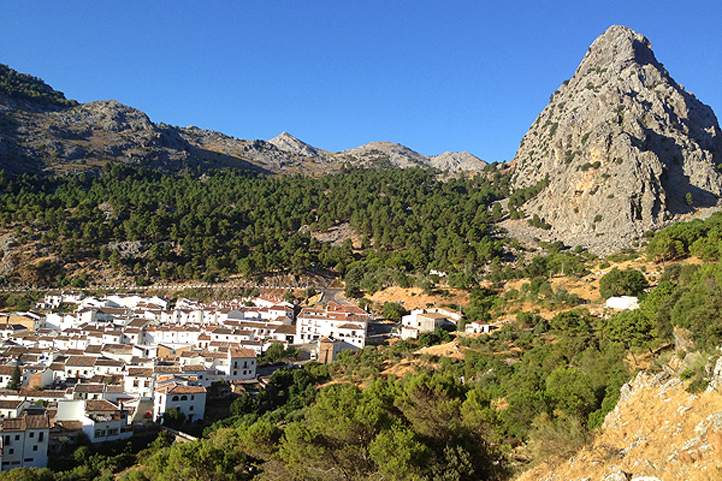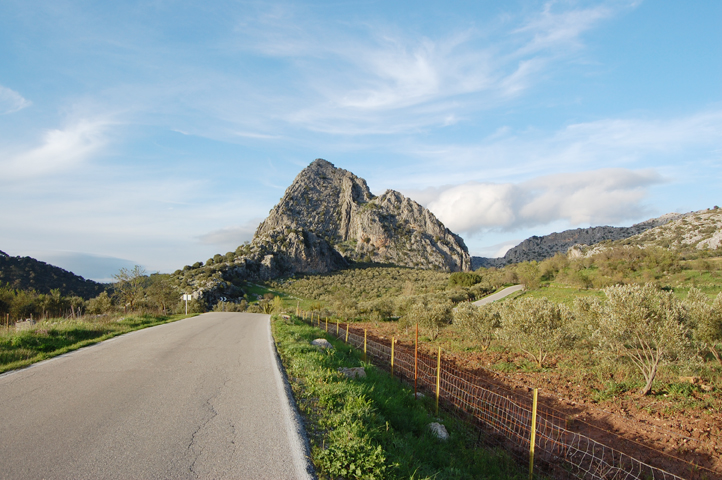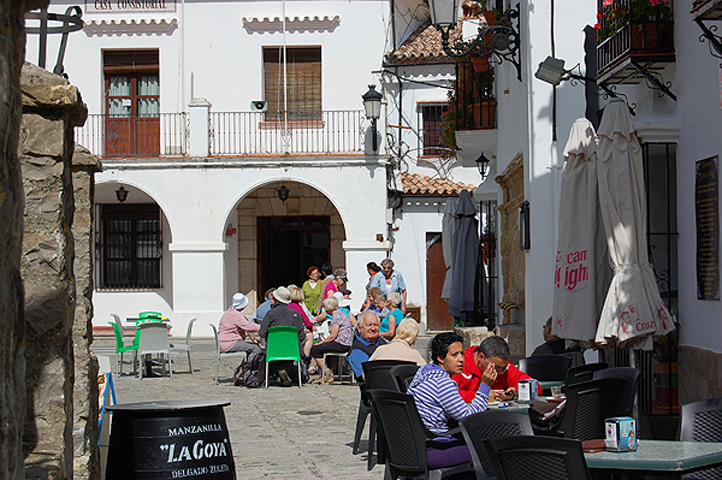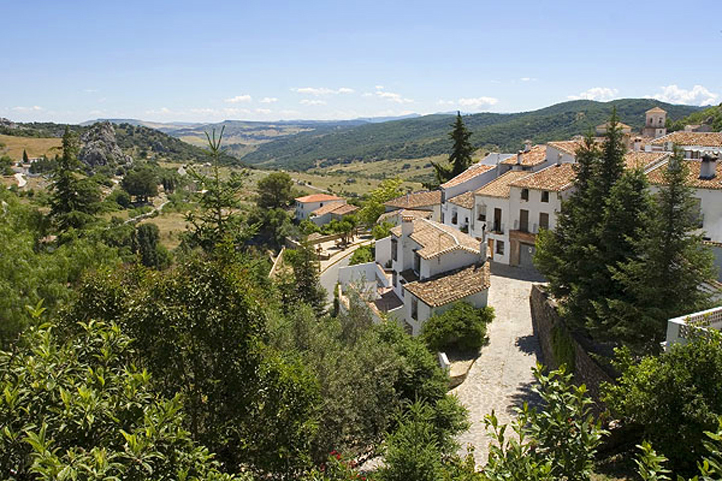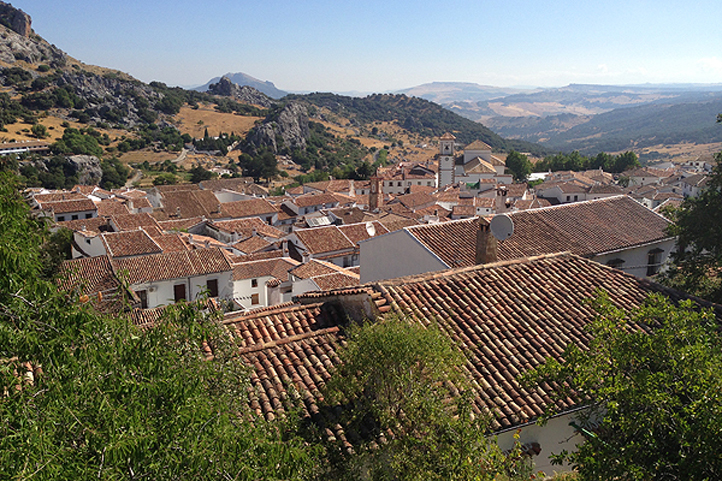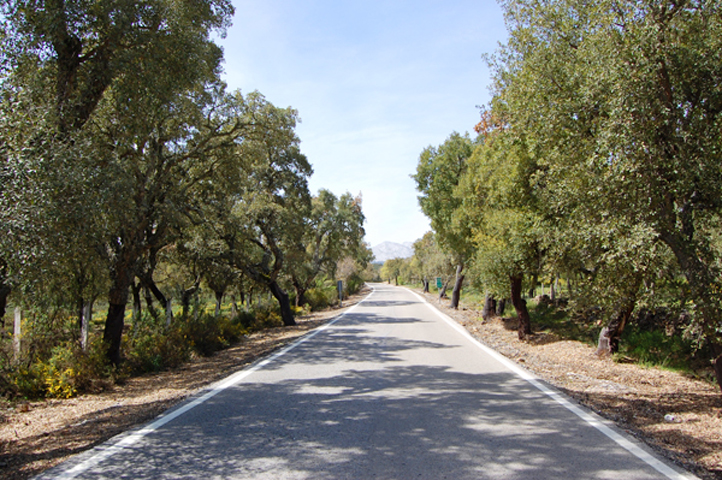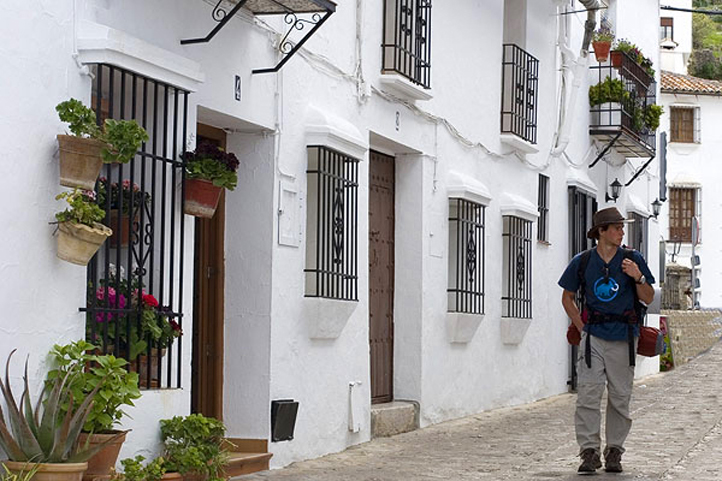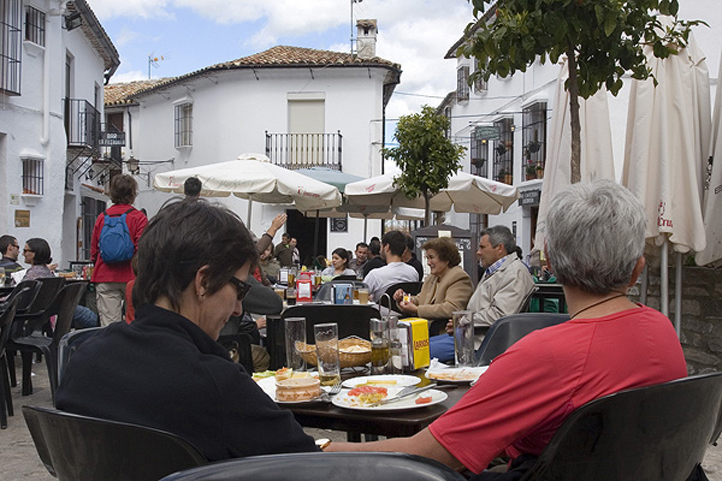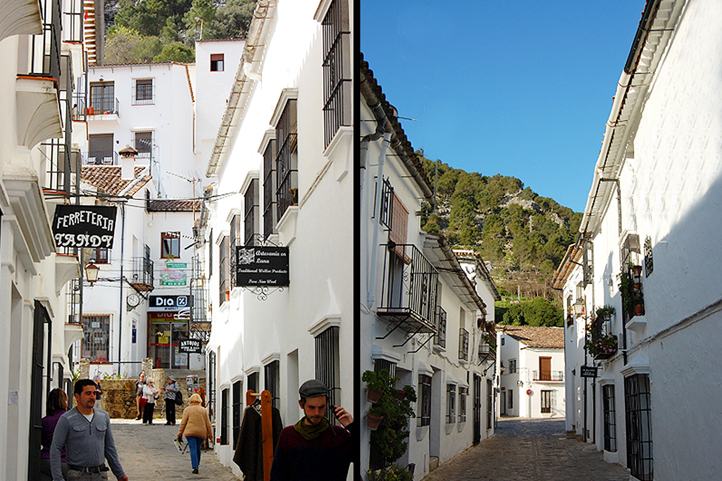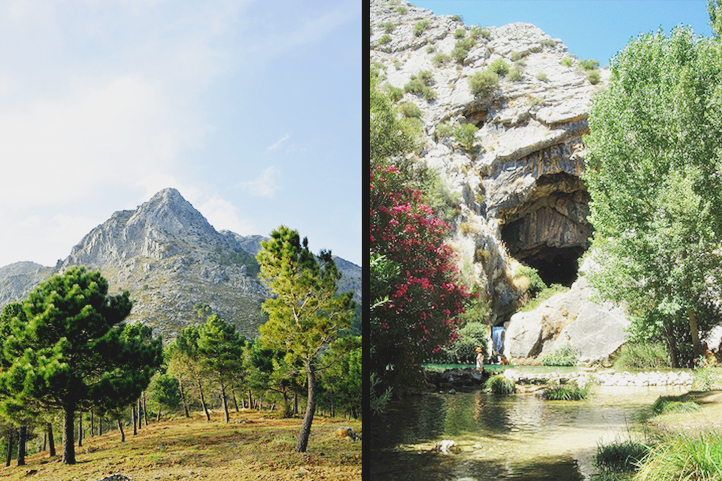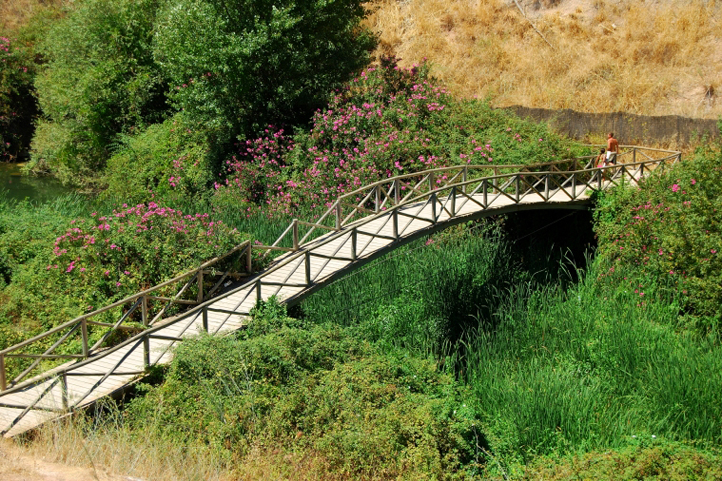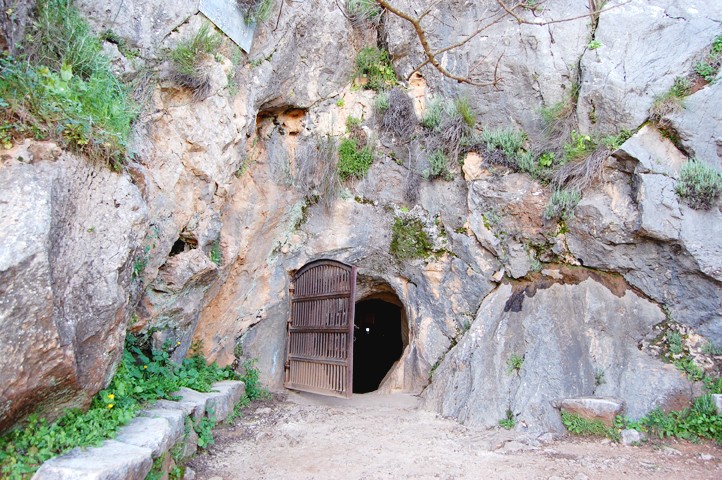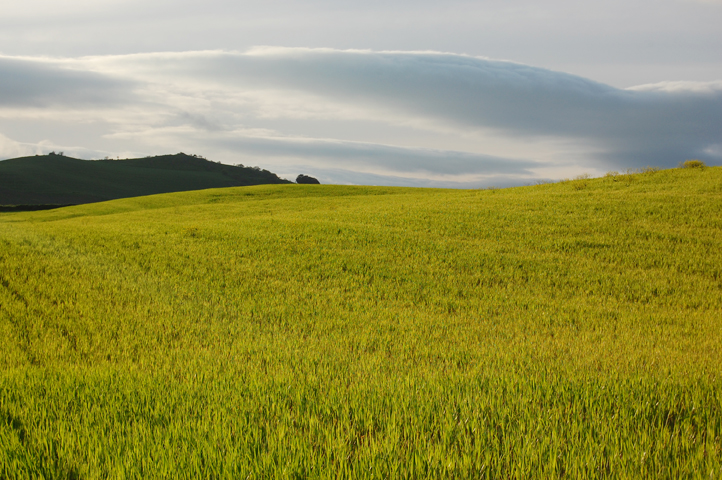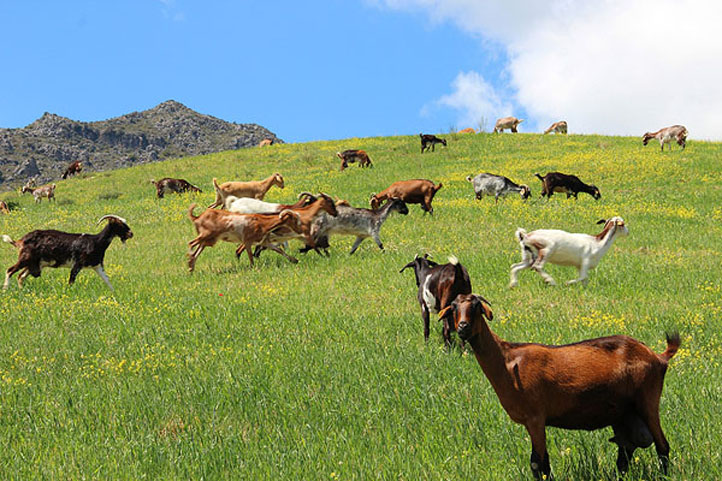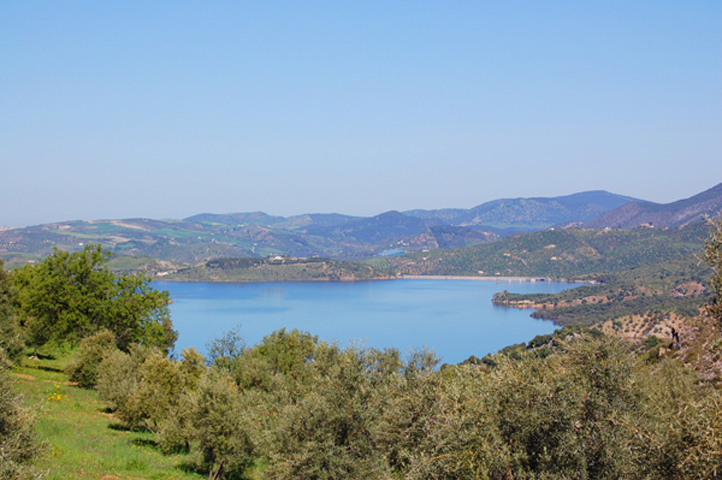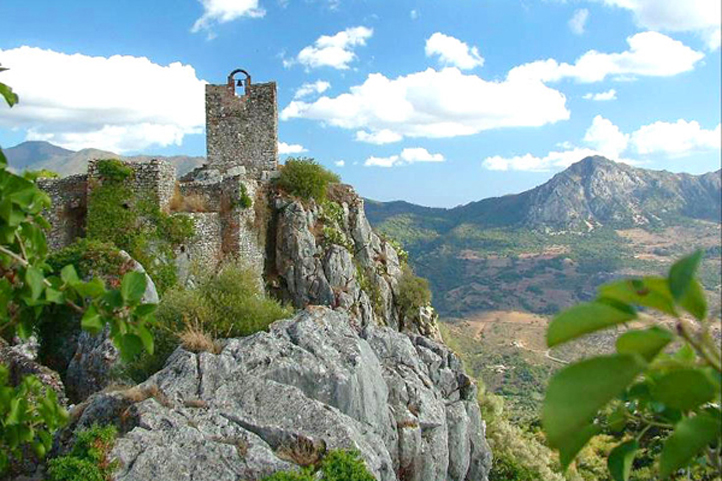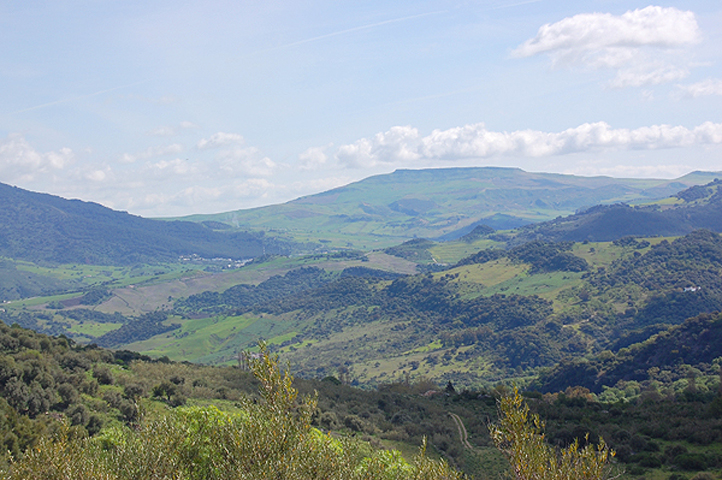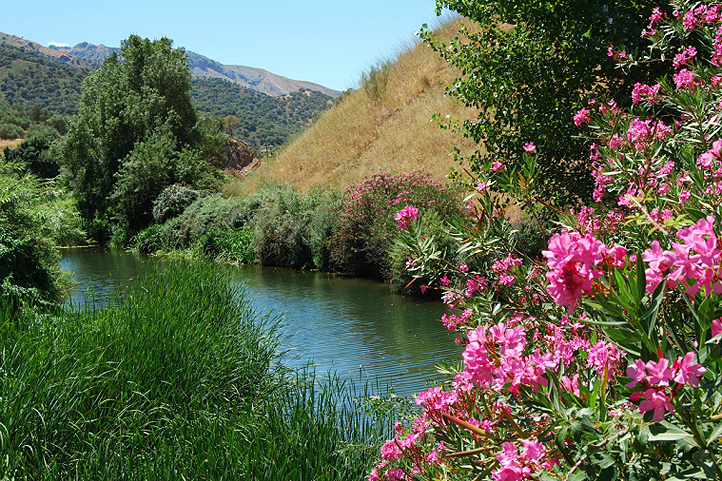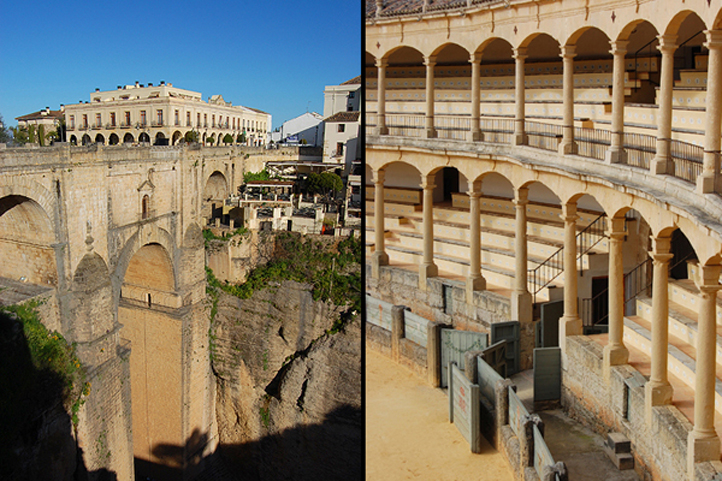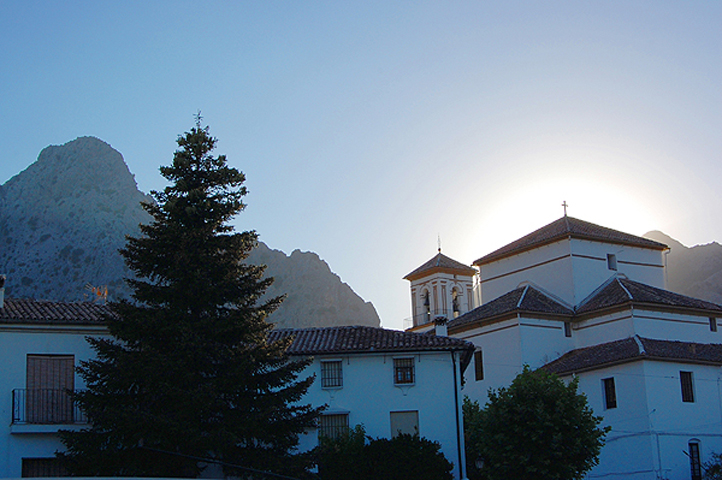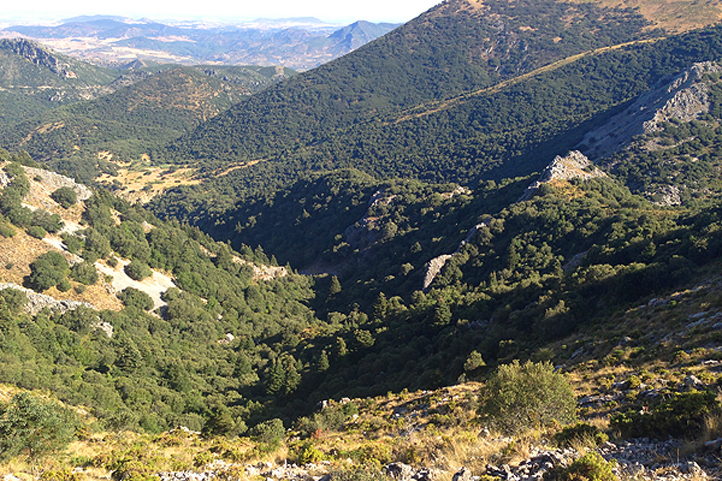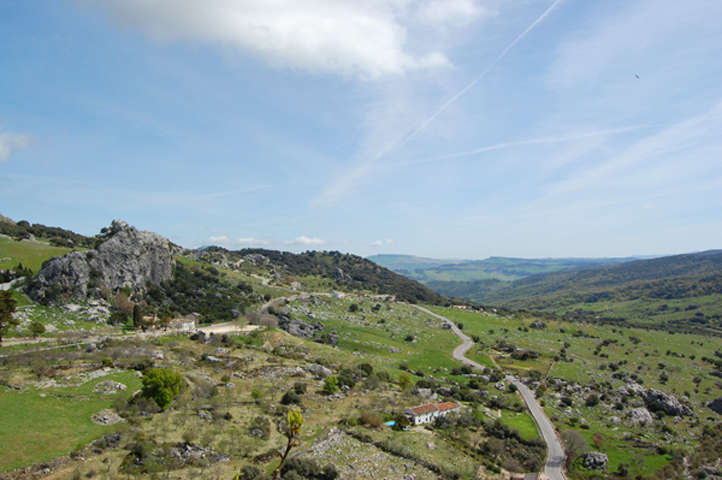Grazalema is a mecca for walkers and birdwatchers and there are some simply wonderful hikes. Guided walks are available and can open up the country to you in a way that going on your own might not, and you should hire a guide if you want to explore the limestone caves, but otherwise self-guided walking is the norm.
One of the best walks is the circular route that starts at the camp site just above the village and goes clockwise around the base of the Peñon Grande, which is the large mountain that overlooks the town.
On the towering rock face of the Garganta Verde (Green Throat Gorge), dropping vertically a dizzying 400 metres, nest griffon vultures.
As if that wasn't enough, an astonishing cave systems lie hidden beneath the living landscape, The Cueva del Gato (Cat Cave), should be explored only with a guide, but you can enter the cave mouth safely and swim in the natural pool beneath the waterfall cascading from the cavern's opening.
Another circular route, the Cerro de Coros walk is short but stunning and with vantage points for raptor watching. The 3.5 km circular walk takes 2 hrs only but you are likely to spend a lot longer if the eagles, vultures and other raptors are flying.
We include directions for this walk along with much more information for Grazalema in the detailed Local Guide we send to Rustical Travel holidaymakers.
Permits for the protected routes are limited to 25 people per day. They are available at Grazalema Tourist Office which has been remodelled and reopened in October 2014. Routes to Garganta Verde, Pinsaper, Torreón and Llanos de Ravel are off-limits in July and August when the fire risk is at its greatest and the summer heat constitutes a deterrent in itself.
MOUNTAIN BIKING
A fascinating choice is the Ruta de la Via Verde, which goes from Olvera to Puerto Serrano following an old railway track (built in the 1930s and never used) through countryside and a series of 30 tunnels. Olvera is 45 mins from Grazalema. The route of 39 km takes 3 hrs 30 mins and is mostly downhill, graded "easy". Bookable with bicycle hire from a local agency.
SPA BATHS
We rate this as one of the star attractions in the village. Located centrally and created with imagination, the home-made spa facilities include a 35⁰C hot pool with massage jets for tired legs, a rain corridor, cold bucket plunger, mist shower, hot-and-cold alternating shower, sauna and massage room. Excellent for walkers and bike riders after a long trek.
NEILSON GALLERY
Art works by Spanish and international artists, with changing exhibitions. Also has free WiFi.
ARCHITECTURE
On the main Plaza de España are the 18th century La Aurora church, the parish church of La Encarnación and the Town Hall (Ayuntamiento). Visit also the 17th century church of San José, formerly a Carmelite convent with paintings by one of Murillo's students. Close by is a viewpoint with a lovely view over the village.
CHEESE FACTORY
Just outside town on the road up is Queso Payoyo, which is open to the public. Try the goat or sheep cheese, or the combination of the two. Also, natural yoghurts. Local produce par excellence!
TEXTILE FACTORY
Grazalema's once famed mantas are still produced by one small factory on the road to Ronda, Artesanía-Textil de Grazalema. They remain sought after, in particular by Andalucian equestrian centres and horseriders.
ARROYOMOLINOS SWIMMING LAGOON AND BEACH
25 minutes from Grazalema, by Zahara Lake and at the foot of Mount Prieto, is a delightful and well-kept recreational area with a large lagoon for swimming and lawns with shade under trees. Playita Arroyomolinos is good for toddlers, too, with easily accessible shallows for paddling along the water's edge. Inflatables are allowed.
It's a fabulous destination for a picnic and a swim between olive groves and mountains. There are lifeguards, bar-restaurant, barbecues, play areas, toilets and secure car parking.
RONDA MOUNTAINS AND VILLAGES
Drive round the old whitewashed villages of the Ronda mountains, inhabited since Neanderthal times and visit caves that prove it. There are many routes, but one that people always enjoy is the easy drive round through Montejaque and Benaoján villages, continuing south to La Pileta cave, where prehistoric paintings and fossilized Stone Age skeletons were discovered in 1905. A lovely walk long the picturesque valley combines with the little train running between Benoaján and Jimar villages.
Read more about Ronda Mountains and villages
RONDA TOWN
A major attraction. The small historic city of museums, bandits, Hemingway and Orson Welles, shopping and the oldest bullring in Spain, famously divided by a bridge over a yawning chasm, is 30 minutes from Grazalema.
BEST OF THE REST
Zahara de la Sierra (25 mins)
On the lake (it's a reservoir, really, but you wouldn't know it), Zahara village is reached along the high mountain road that links the two villages via the Puerto de Las Palomas pass. Zahara is one of the better known white villages thanks to its spectacular rocky perch and the beautiful backdrop of the Sierra del Pinar. Atop the village, the old Moorish tower is just the place to watch the sunset over the water. There's also an excellent restaurant for overlooking the lake for a special dinner.
Paragliding (30 mins)
Algodonales is a major site for hang-gliding and powered paragliding. A paragliding school offers flights in tandem, no experience needed.
Gaucin (1 hr 15 mins)
Gaucin is one of Andalusia's most popular "white villages." Blessed with a Mediterranean climate, the village sits hitched up in its mountain setting 630 metres above sea level. The Mediterranean and sandy beaches are just half an hour away. Gaucin is presided over by "Eagle Castle." Holidaymakers who today enjoy superb views of the Strait of Gibraltar, the Rock itself, and all the way across to the Rif Mountains in Morocco, can imagine how important the strategic view once was to the castle defenders.
Read more about Gaucin
Jerez (1 hr 15 mins)
There are two very good reasons for visiting Jerez. One is to see the Royal Equestrian School, the other to visit its sherry bodegas. The González Byass bodega visit is particularly well organised and there is plenty of fino to be tasted at the end of your visit.
FIESTAS
Grazalema likes its fiestas. Naturally, these are supplementary to Spain's national fiestas which decree even more days off through the calendar.
A mini-pilgrimage, the Romería de San Isidro Labrador, is made on the last Sunday in May and shortly afterwards, on June 13th, the village fêtes Saint Antony.
Come July, and it's time for the Fiestas de la Carmen, which take place in the third week of the month and culminate on a Monday with the tradition of the toro de cuerda. The village divides into two groups and each tries to pull a bull, roped around its horns, into their adversaries' terrain.
A couple of weeks later, on the first Sunday in August, nearby Benamahoma celebrates the festival of Moors and Christians with a mock battle.
Grazalema then gears up again for its main summer festival Las Fiestas Mayores de Grazalema. In the third week in August, Grazalema is decorated with woodland garlands and the town celebrates with music, dance and numerous outdoor activities for all, from the youngest to the oldest.
A modest respite is now granted before the day of the Virgen de los Angeles, its patron saint, is celebrated on September 8th.
FOOD AND DRINK
Grazalema's historical isolation explains the traditional predominance of game on the dinner table, hunted on the hills served fresh, along with mushrooms in season. Typical local dishes include lamb, trout, bean soups, a unique asparagus gazpacho, wild mushrooms, dairy sponge and almond cake.
Vegetarians may like to try the asparagus soup, boletus mushroom croquettes, grilled vegetables and tagarninas, which we think are unique to Grazalema: freshly peeled pines with a texture of thick asparagus, served in season up until July.
For self-catering, there are three supermarkets close to the main square (Plaza de España) and one of them always opens on Sunday. For eating out, little Grazalema offers has a good number of restaurants, normally fairly cheap:
• Casa de las Piedras - It has a young and dynamic management and is inventive without going astray with it or being precious. Attentive staff, a pleasant atmosphere, good prices, and, most importantly, well-prepared, interesting and delicious dishes making the most if local ingredients.
• Zulema - It has a terrace on a traffic-free square and a well-priced, simple set lunch menu.
• Cadiz el Chico - It boasts a Michelin star, yet is not especially expensive. Speciality is lamb roasted in a wood oven, also venison, wild boar and rabbit and home-made desserts. It has some very good wines from a bodega in Zahara and a group visit can be arranged there on request.
• Torreón - It has an extensive menu from fish to game to stuffed sirloin steak. Some vegetarian dishes, also.
• El Simancón - Situated on a quiet square, it serves a 3-course set meal in the evening as well. Specialises in meat dishes, occasionally has fresh fish such as trout or swordfish.
• El Pinsapar - It uses fresh seasonal ingredients in traditional cooking at reasonable prices.
• Mirador el Tajo - It has fantastic views from its cliffside location next to the municipal swimming pool.
• Rumores - It is a popular breakfast spot with a great variety of newly baked bread rolls for toasting and freshly squeezed orange juice. It has its own pastry shop (pastelería).
Bars and restaurants usually offer tapas (small portions), or raciones, which are often available as half rations or full rations, so trying lots of different dishes is a great option for dining out.
Unlike other regions of Andalucia like Granada, tapas are not free here, but you can choose what you like to eat with your drink for a small price.
























